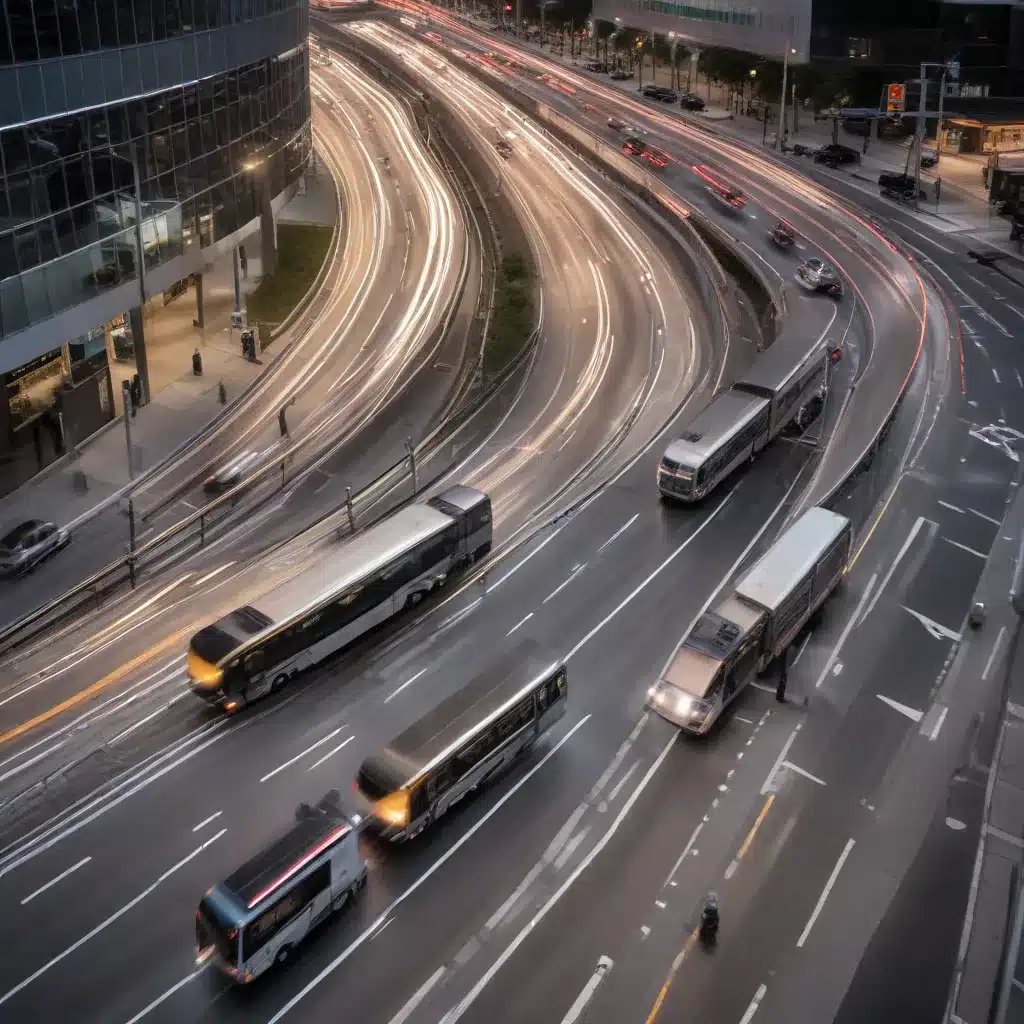
Intelligent Transportation Systems: Optimizing Mobility and Energy Efficiency
As the world rapidly moves towards a sustainable future, the transportation sector has emerged as a critical battleground in the fight against climate change. In Europe, where ambitious net-zero emissions goals have been set, the need to develop intelligent, energy-efficient transportation systems has never been more pressing. Fortunately, a confluence of emerging technologies, innovative policy frameworks, and collaborative public-private partnerships are paving the way for a mobility revolution that promises to reshape the way we move people and goods.
Mobility Optimization
At the heart of this transformation lies the concept of Intelligent Transportation Systems (ITS). These are integrated networks of advanced technologies that work in concert to optimize the movement of vehicles, pedestrians, and goods, all while enhancing energy efficiency and reducing environmental impact.
One of the key components of ITS is traffic management. By leveraging real-time data from sensors, connected vehicles, and integrated control systems, transportation authorities can better manage the flow of traffic, reducing congestion and improving journey times. This, in turn, leads to reduced fuel consumption and lower carbon emissions. Advanced algorithms can also be employed to route planning, guiding vehicles along the most energy-efficient paths, taking into account factors like terrain, traffic conditions, and driving behavior.
Equally important is the integration of multimodal transportation. By seamlessly connecting various modes, such as public transit, shared mobility services, and active transportation (e.g., walking, cycling), ITS can offer travelers more convenient and sustainable options, reducing the reliance on private, fossil-fuel-powered vehicles. The European Union’s Sustainable and Smart Mobility Strategy exemplifies this approach, promoting the development of interoperable, multimodal systems that prioritize environmental sustainability.
Energy Efficiency
Alongside mobility optimization, ITS also plays a crucial role in enhancing the energy efficiency of transportation. One of the most promising avenues is the widespread adoption of electric vehicles (EVs). By leveraging smart charging infrastructure and intelligent routing algorithms, ITS can help maximize the energy efficiency of EVs, reducing their environmental impact and supporting Europe’s transition to a decarbonized transportation sector.
Additionally, smart infrastructure such as intelligent traffic signals and dynamic road pricing can further improve energy efficiency. By adjusting traffic signal timing based on real-time traffic conditions, ITS can minimize vehicle idling and unnecessary stops, leading to reduced fuel consumption and emissions. Similarly, dynamic pricing mechanisms can incentivize drivers to adjust their behavior, choosing more efficient routes or modes of transportation.
Beyond infrastructure, eco-driving strategies facilitated by ITS can also contribute to energy savings. By providing drivers with real-time feedback on their driving behavior, ITS can encourage more efficient driving practices, such as smooth acceleration, appropriate speed maintenance, and anticipation of traffic conditions.
Emerging Technologies
The rapid advancement of emerging technologies, such as autonomous vehicles (AVs) and connected vehicles (CVs), is further transforming the transportation landscape and driving the evolution of ITS. AVs, with their ability to navigate roads without human intervention, can optimize their routes and driving behavior to maximize energy efficiency, while CVs can communicate with nearby infrastructure and other vehicles to coordinate traffic flow and reduce congestion.
Another integral component of ITS is intelligent traffic signals. By integrating sensors, communication technologies, and advanced algorithms, these traffic signals can adapt to changing conditions, prioritize different modes of transportation, and even communicate with connected vehicles to enhance overall system efficiency.
Data-Driven Decision Making
Underpinning the success of ITS is the widespread adoption of data-driven decision making. By leveraging big data analytics and predictive modeling, transportation authorities can gain deeper insights into travel patterns, infrastructure utilization, and energy consumption. This, in turn, allows them to make informed decisions on infrastructure investments, policy interventions, and the deployment of emerging technologies.
Real-time monitoring and predictive analytics also play a crucial role in ITS. By continuously tracking and analyzing data from various sources, including sensors, vehicle telematics, and traveler information systems, transportation managers can anticipate and respond to changing conditions, optimizing the system in near-real-time.
Sustainability and Environmental Impact
As the world grapples with the urgent need to address climate change, the environmental impact of transportation has become a paramount concern. ITS offers a pathway to a more sustainable future, with the potential to significantly reduce carbon emissions, mitigate noise and air pollution, and promote circular economy principles.
By optimizing traffic flow, encouraging the adoption of EVs, and integrating multimodal transportation options, ITS can help lower the transportation sector’s carbon footprint. Moreover, the data-driven insights generated by ITS can inform policymakers and urban planners, enabling them to make more informed decisions that prioritize environmental sustainability.
Furthermore, the integration of smart infrastructure and eco-driving strategies can contribute to the reduction of noise and air pollution, improving the overall quality of life for citizens in Europe’s cities and communities.
Conclusion
The transformation of transportation systems through the implementation of Intelligent Transportation Systems represents a critical step in Europe’s journey towards a sustainable, low-carbon future. By optimizing mobility, enhancing energy efficiency, and leveraging emerging technologies, ITS holds the promise of revolutionizing the way we move people and goods, all while mitigating the environmental impact of the transportation sector.
As Europe continues to lead the global charge in the fight against climate change, the development and deployment of ITS will undoubtedly play a pivotal role in achieving its ambitious net-zero emissions goals. Through collaborative efforts between policymakers, industry leaders, and innovative researchers, the future of transportation in Europe is poised to be smarter, greener, and more efficient than ever before.







